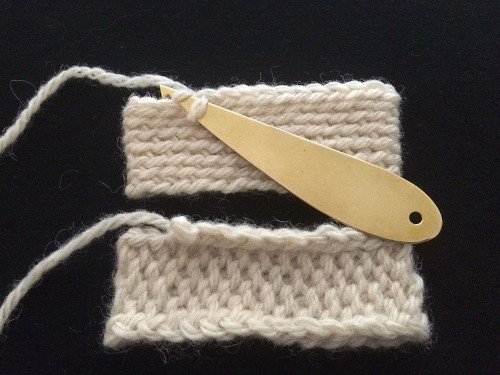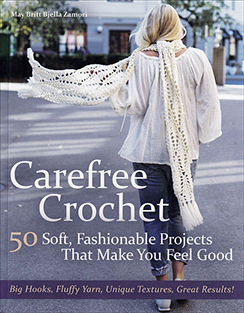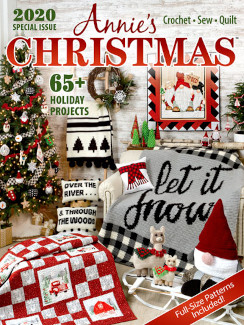
Related Resources: How to Slip Stitch | Free Instructions for Surface Crochet Slip Stitch | Slip Stitch to Form a Ring | Crochet Stitches | Crochet Techniques
The Humble Crochet Slip Stitch Is Much More Versatile Than You Might Think:
Many of the crochet enthusiasts I’ve talked with have been unaware that they could be using crochet slip stitch to create unique, lovely fabrics. If you’ve only thought of slip stitch as a way to join crocheted squares and other pieces together, I hope you’ll take another look and consider some of the exciting possibilities for using the slip stitch.
There are many possible ways you can use slip stitch fabrics. In particular, I think they are wonderful to use for designing menswear. If you’re interested in crocheting guy-friendly designs, I think you will find that slip stitch crochet is well worth exploring; it’s also a great technique for creating women’s wear, children’s wear, home decor projects, accessories and just about anything else you might like to crochet.
One important caveat: Slip stitches are not tall, so your crocheted pieces grow slowly when you use this technique. For that reason, you might want to reserve this technique for crocheting small projects like mittens and hats. I’ve used it to make hats and scarves, and both of those took longer than expected to complete. This is not the technique you want to use for making rush, last-minute Christmas gifts or other gifts.
In the photo above, you can see a couple of examples of solid-colored slip stitch fabrics. It’s also possible to use multiple yarn colors and create colorful slip stitch fabrics.
Other Names for Slip Stitch Crochet
There are many possible names you could call the technique of using crocheted slip stitches to create entire fabrics. Crochet terminology is not always standardized, and this is one of those cases. Part of the problem is that language barriers contribute to the overall confusion. Here are some of the various names I’ve encountered for different variations of slip stitch crochet. Note that these names do not all mean precisely thing, and they cannot necessarily all be used interchangeably; but they all do refer to similar techniques involving slip stitch and crocheting.
- English Names: Bosnian crochet; shepherd’s knitting*
- Norwegian Name: Pjoning
- Swedish Names: according to Barbro Heikinmatti, various slip stitch techniques are referred to in Swedish as “smygmaskvirkning,” “gammelvirkning,” “påtning,” “gobelängvirkning,” “bosnisk virkning,” and “krokvirkning.” If you’d like to see the English translations and learn a bit more about the distinctions between these techniques, I refer you to her interesting and informative blog post on the topic of Bosnian crochet. It’s a fantastic article with lovely pictures and lots of great info.
I doubt this is a comprehensive list of all possible names for slip stitch crochet, but it at least gives you an idea of some of the most popular names.
*I’ve also encountered people who use the term “shepherd’s knitting” to refer to Tunisian crochet, which is a different technique requiring a longer crochet hook.
Crochet Hooks for Slip Stitch / Pjoning Hooks
Some crochet enthusiasts find it challenging to work slip stitch crochet with an ordinary crochet hook. A pjoning hook is a hook that is shaped especially with slip stitch in mind; you can see an example of a pjoning hook in the photo above. These are not so easy to find in the United States.
I’ve heard that a pjoning hook greatly facilitates the process of crocheting slip stitch fabrics; I believe this must be true, although I haven’t actually tried working with a pjoning hook. You could expect to get different results when working with a pjoning hook vs a standard crochet hook.
So far, I’ve been using Boye hooks for my slip stitch crochet attempts. I’m sure it would be an improvement to use a dedicated pjoning hook. I do know this: So far I’ve found that working with a larger-than-usual hook helps to make the crocheting go a little easier, not to mention a tiny bit faster.
Downsides to Slip Stitch Crochet
When it comes to making fabrics with slip stitch, there are several downsides:
- Slip stitch is significantly shorter than other crochet stitches, which explains why slip stitch fabrics grow slowly compared to fabrics worked in other crochet stitches.
- Communicating the instructions for a slip stitch fabric can get confusing, and it can be a challenge to follow patterns for projects made using this technique. When working these patterns, it’s not always easy to differentiate which loop you should be working into.
- Some variations of slip stitch crochet require expertise. In general, success with slip stitch crochet requires an extreme amount of patience.
How to Crochet a Slip Stitch Fabric
You can try crocheting swatches of various slip stitch patterns to see how this works. Simply crochet a starting chain of any length and then work slip stitches into it all the way across. If you’re trying to make a textured pattern stitch, you could vary whether you crochet into the front or back loops. Otherwise, be consistent in choosing the front or back loop.
When its time to turn the work, it gets a little tricky, because it’s ideal to turn the work without working a turning chain. You can work a turning chain if you want to, but if you do that, you might end up with a piece that flares out a bit at the sides. If you do work a turning chain in these pieces, it’s prudent to tug at each chain a bit to make it as small and unobtrusive as possible in hopes of reducing the flared effect.
After you’ve turned the work, you can resume working slip stitches across the row. Repeat as many times as necessary to make a fabric you’re satisfied with.
So there you have it: Those are the essential basics you need to know about slip stitch crochet / pjoning. If you’d like to make sophisticated crocheted fabrics like the ones pictured here, and you have the patience to persevere through projects that take a long time to complete, you’ll definitely want to consider giving this technique a try.
References and External Links
I’ve linked to my main references in the text of the article above. The resources linked below provided additional insight that I found helpful when creating the article.
- Carol Ventura’s post at Tapestrycrochet.com
- Emily Moss’s post about pjoning at the Ravenhill blog
- At the Wikimedia Commons website: The author of the photo posted above has published it under a Creative Commons license. Here’s a link to the license.
More Crochet Techniques

More Knitting and Crochet From Around the World

- Socks From Around Norway : A Scandinavian Style Sock Knitting Pattern Book
- Winter Knits from Scandinavia: Stranded Color Knitting Patterns
- Granny Squares Crochet Pattern Book
- Carefree Crochet: Gorgeous Patterns for Long Cardigans, Sweaters, Jackets, Blankets and More
- New Knitting Patterns for Traditional Danish Sweaters
- Japanese Knitting
More Craft Techniques and Ideas to Discover:

- Best Christmas Craft Books for the 2021 Holiday Season
- Knitting
- Knitting Books
- Speed Knitting
- Knitting Supplies
- Lace Knitting
- Cable Knitting
- Knitting Techniques
- Yarn
- Sewing
- Kitchen Crafts
- Home Decor Crafts and DIY Project Ideas
Check Out More Craft Techniques and Project Ideas HERE!
Posted By: Amy Solovay
This page was last updated on 9-4-2021.